When cooking from a recipe, you’ll find a lot of information that will help you make the perfect dish. Along with temperature, time, measurements, and ingredients, you may see instructions on how to chop or dice each ingredient. Have you ever wondered what that means? What’s the difference between a “rough chop” and a “large dice”? Does it really matter?
Following the dicing recommendations of your recipe will make your recipe look good, help the flavor and texture, and cut down some prep time and food waste. Here are some pictures of the common dice sizes you might find in a recipe, compared to a Canadian quarter:
Rough Chop (paysanne)Used for stock, or cutting down vegetables that will be pureed
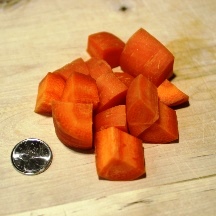 | Large Dice (¾ inch × ¾ inch × ¾ inch)
Large cube shape typically used for stews or stocks
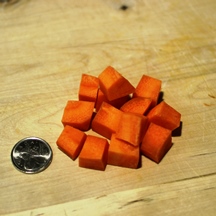 |
Medium Dice (½ inch × ½ inch × ½ inch)Medium cube shape typically used for soups and garnishes
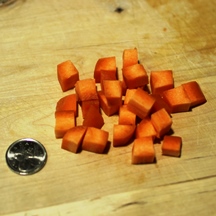 | Fine Dice (¼ inch × ¼ inch × ¼ inch)
Small cube shape, typically used for sautéing
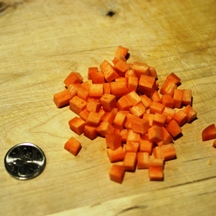 |
MinceSuitable for vegetables and herbs, garnish
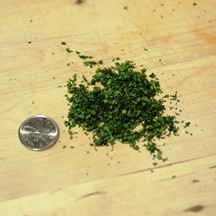 | Shredding (chiffonade)Suitable for herbs and leafy greens
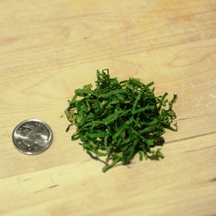 |
JulienneLong, parallel, rectangular cuts, squared off (trimmings can be used for stock, soups or puree)
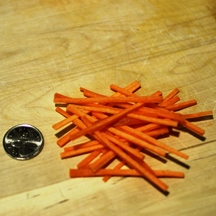
|
|
Learn more about
knife skills (PDF) from the Culinary Institute of America’s Food & Beverage Institute.
